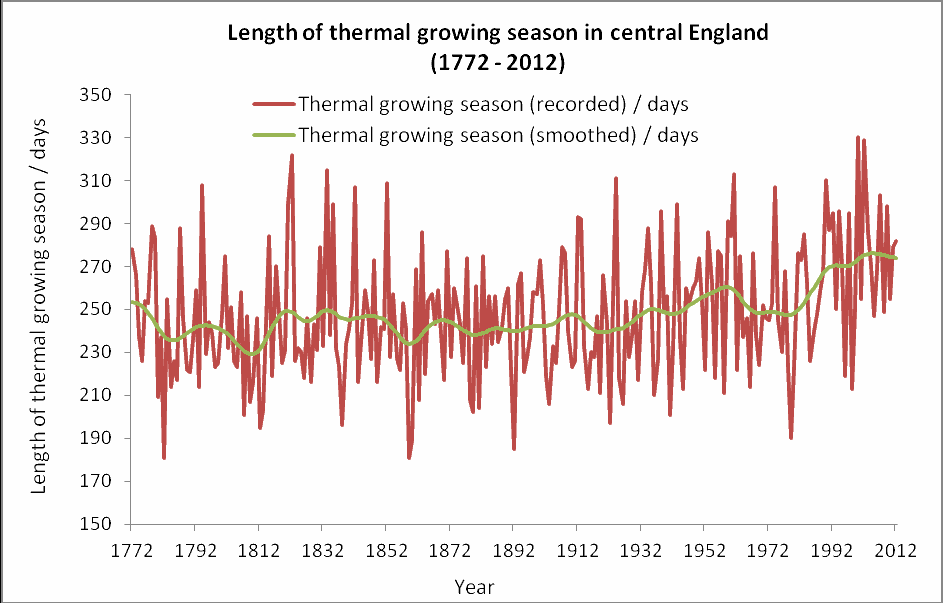You might have seen the news that the growing season in the UK has grown nearly a month longer on average than the 1961-90 average used as a modern baseline by the Met Office. At first sight this seems like really good news for growers but ‘the devil is in the detail’ as they say.
Definition of Growing Season
The definition of the growing season is the period of time each year during which plants can grow. The length of a thermal growing season is the longest period within a year that begins at the start of a period of five successive days where the daily-average temperature is greater than 5.0°C and ends on the day before of a period of five successive days when the daily-average temperature is less than 5.0°C
The UK Met Office has comparable daily temperature measurements going back to 1772 for central England, a total baseline a little longer than the USA has existed!
Variations in the UK Growing Season
The growing season varies each year and seems to have been getting longer since the beginning of the 20th century although there was a dip in the 1970s. The shortest years on record are 1782 and 1859 where the season was just 181 days. The longest was 330 days in the year 2000.
The 1961-1990 average growing season was 252 days but the average for the first years of the 21st century was up in the 270 days. One point the report makes is that the increase in growing season length is largely due to spring starting earlier since 1980. The 2002 growing season actually started on 13th January, which would normally be considered mid-winter!
Now, whilst this is a worrying indicator of things getting warmer with climate change, it appears to be good news for gardeners and farmers in the UK. A longer growing season means crops can be grown that otherwise wouldn’t have time.
What does the change in growing season mean for us?
It would be interesting to see similar figures for different areas of the country but, as I’ve often said, we have different micro-climates and even places within a few miles of each other can vary considerably.
London and the south-east with their dryer and warmer climate already grow plants that 50 years ago would have been considered impossible outside of a greenhouse.
Over the last 50 years we’ve seen quite a few vineyards establish in the UK and some are now giving the French a run for their money, producing very high quality wines. In Kent there is even a commercial olive grower established, a very Mediterranean crop.
Fig trees and citrus fruits are becoming common for home growers but we’re a few years away from walking through orange groves in Wales!
What I would take from this report is that it’s worth taking a chance and sowing early when spring arrives early. I remember a few years back commenting on a plotholder planting potatoes in early February. Much to my surprise he was successful and got a decent very early crop.
You can read the Met Office report on the growing season here: Thermal growing season in central England





Leave a Comment Here on Growing Season in UK Grows by a Month!